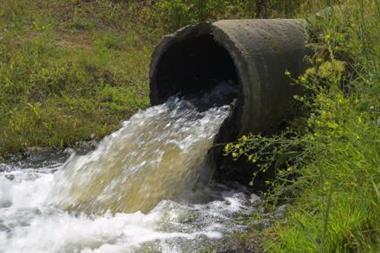Pollution liability and its insurance have been the subject of much controversy over the last 30 years. The situation for firms operating in the UK and Europe is about to become even more challenging as new legislation begins to bite. Chris Tagg writes
“He is no wise man that will quit a certainty for an uncertainty.” – Dr. Samuel Johnson (1709-1784)
The implementation of the Environmental Liability Directive (ELD) has generated much interest and speculation as to its impact, scope and practical execution in the various member states to which it applies. It is the extent to which the directive will increase costs and whether such costs are capable of being insured against – either via existing or new products – that is driving much of this debate.
To date, there is still a great deal of uncertainty regarding the ELD, including the precise date it will be implemented (both in the UK and throughout Europe). This creates challenging risk assessment and management considerations for organisations that are faced with potentially increasing exposures that are difficult to quantify or insure.
Although the insurance industry has experience in handling pollution losses and subsequent clean-up, the focus to date has been on 'primary' remediation: returning damaged natural resources back to their original (or baseline) condition. Other than the small number of insurers offering specialist environmental insurance liability (EIL) products, cover for damage to third party land or property has been restricted to losses that are sudden and accidental in nature and for which the insured has a legal liability.
However, in addition to maintaining the requirement for primary remediation, the ELD introduces the concepts of complementary and compensatory remediation. Understanding the practical implementation of these two measures, and the costs that may flow from them, is one of the major challenges for organisations seeking to assess their potential new exposures under the ELD.
What are complementary and compensatory remediation?
The underlying principle behind the directive and these measures in particular appears to be a desire to ensure that the environment is fully 'indemnified' where there has been damage. That said, it does recognise the fact that it is often not possible to replace damaged natural resources in the same way that a building can be reinstated. Damaged natural resources may need significant time to recover, or indeed may never achieve the same state as they enjoyed prior to the damage occurring. How, for example, would primary remediation be considered complete in situations where a species unique to a particular site had been destroyed or a 250 year old oak forest had been devastated?
To address these issues, two new types of remediation have been introduced.
Complementary remediation is to be undertaken where the damaged natural resources are unable to be returned to their original baseline condition. Where possible, such remediation should take place at a site geographically linked to the original site.
Compensatory remediation is undertaken to compensate the damaged natural resources in respect of the interim loss pending recovery, – the time taken for full remediation to be achieved. This could take place either at the original site or an appropriate alternative and is not intended to imply financial compensation to members of the public.
Although at first glance these measures are understandable, they create a number of questions when considering how they will be implemented:
- How will damaged natural resources be evaluated, and by whom?
- What happens if suitable alternative sites cannot be readily identified?
- How will the extent of any compensatory and complementary remediation be determined?
- How will the time period to achieve a return to the baseline condition be established?
- Is it possible to 'over-remediate' and will recovery be possible in such cases?
While Annex II of the directive does provide direction towards determining the scale and appropriateness of the various remediation measures, there exists considerable scope for the various authorities (likely to be the Environment Agency in the UK) to exercise discretion and judgement when considering individual cases.
Until such time as the directive is fully implemented and real situations arise, there is likely to remain a high level of conjecture as to the precise impact these measures will have. The significant probability of protracted legal disputes will only serve to extend this period of uncertainty.
Why do these measures present challenges for insurers?
There are a number of factors that determine the extent to which any particular risks may or may not be insurable. Aside from the well understood restrictions regarding criminal activity, deliberate acts and 'mass risks' (ie those that affect the population as a whole), there are other critical factors that have direct relevance to the potential insurability of remedial measures under the ELD.
Quantifiability For insurers to consider any particular risk, it must be possible to estimate and quantify (in monetary terms) the potential claims costs that could flow from it. There is currently great uncertainty surrounding the costs that could arise from both complementary and compensatory remediation measures and this makes them difficult to quantify. Added to this, insurers require claims to be handled in a predictable and consistent fashion to ensure that costs are close to those expected. The lack of historical experience as to how incidents could be handled or remediated could result in significant uncertainty until a number of cases have occurred and been resolved.
Foreseeability of loss Insurers also need to able to estimate the likelihood of losses occurring in order to establish a basis for setting premiums. Without any historic experience to analyse and draw upon, the implementation of the new legislation presents very real challenges for insurers in this area.
Pan-European implementation The flexibility given to member states as to how the directive is implemented creates further issues for any firms with operations in different territories, as they attempt to assess potential exposures under differing environmental regimes. This situation may also hamper the development of pan-European insurance solutions as insurers seek to understand the differing regimes and their potential cost implications. In addition, the potential for cross-border incidents adds a further layer of complexity.
Ultimately, it is the insurers themselves who will decide whether a particular risk is insurable, by deciding whether or not to offer products to cover it. Already, however, a number of carriers, both existing EIL specialists and others, have identified the opportunities the directive offers and are carrying out research with a view to developing new products and solutions.
Will existing cover be sufficient?
While existing public or products liability policies will provide some protection against liabilities that may be incurred under the ELD, there are a number of areas that are either unclear or currently uninsured. These include:
n Events that are not 'sudden and accidental'
n Costs incurred in the mitigation of potential losses. Most public or products liability policies place this burden on the insured and the ELD specifically requires operators to mitigate where there is an imminent threat of damage
n Clean-up costs that arise due to the application of public law rather than as a civil liability are unclear following the Bartoline case.
At present, all of these exposures can be insured (to some degree) under specialist EIL policies, and these products are becoming increasingly attractive to smaller and medium sized organisations. Furthermore, specialist EIL insurers are already amending their policy wordings to include costs incurred as a result of compensatory or complementary remediation. But while existing products offer valuable cover for many companies, it is doubtful whether current products and existing market capacity could sustain a wholesale increase in demand for coverage against exposures introduced by the ELD.
Other factors for consideration
Role of NGOs Under Article 12 of the ELD, non-governmental organisations (NGOs) and other bodies or individuals with 'sufficient interest' have the ability to request that the relevant authority take action in the event of environmental damage or the threat of it. Furthermore, they have the right to an independent review if the authorities fail to act. This could have the effect of increasing investigative action, and promoting a more adversarial approach by regulators.The provision could also have significant implications for the relationships between organisations, the regulatory authorities, and any NGOs that have an interest. Organisations need to consider how to manage these relationships.
Time There are significant time factors that could result in financial planning becoming very challenging for firms that suffer incidents giving rise to obligations under the ELD. These include:
- The final cost of remediation, particularly complementary or compensatory, may remain uncertain for some years
- The potential for legal disputes
- Competent authorities having up to five years to recover remediation costs from operators.
The way forward?
The implementation of the ELD will certainly create a number of uncertainties for UK firms, their managers and risk managers. However, there is much that can be done to plan ahead and to seek to mitigate the potential exposures that exist. Some of the activities organisations may wish to consider are:
- reviewing risks and exposures in light of the directive
- assessing existing control measures
- establishing the baseline condition of 'at risk' sites
- reviewing EU exposures against the planned implementation regimes
- assessing relationships with NGOs
- reviewing the scope of existing covers
- investigating specialist EIL cover.
Arguably, the ELD will ultimately clarify and reduce doubt by establishing a clear framework for how environmental damage will be handled. It may take time for clear protocols to be developed, but once established, firms will be able to understand their exposures with far greater precision than has previously been the case.
There can be no doubt that the environmental arena represents a huge opportunity for the insurance market to develop new products and solutions. To date, products have been restricted to a relatively small number of carriers offering a range of specialist covers. The broader market should not ignore the opportunity to develop their offerings in this area.
Chris Tagg is executive director, global casualty, Lockton, Tel: 0207 933 2895, E-mail: chris.tagg@uk.lockton.com












